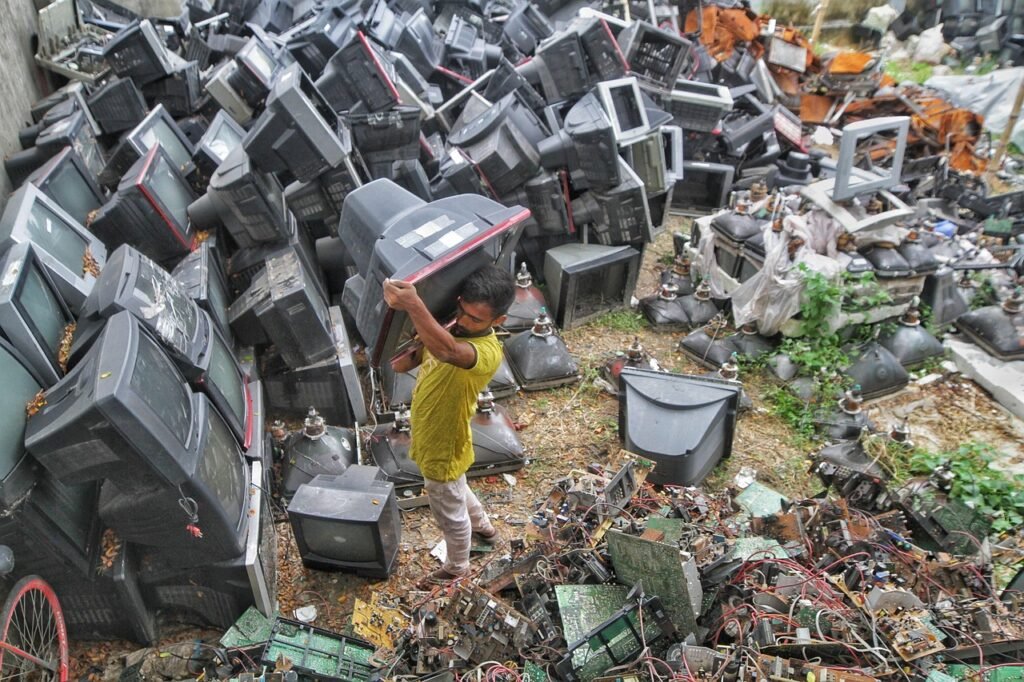Every time someone throws away an old phone, charger, or laptop, it adds to something called e-waste. It stands for electronic waste. It includes used or broken electronics, big and small. Like TVs, computers, fridges, earphones, printers, etc. If it runs on electricity or batteries, it counts.
Now, the issue is not just that people throw them out. The real problem lies in what is inside these gadgets. Most of them have harmful materials, like lead, mercury, and lithium. These do not go away on their own. When dumped in landfills, they leak into the soil or water. Over time, they damage nature. And yes, they can hurt people, too.

t of it is ever recycled. Many do not even know that recycling electronics is possible. The rest? It is burned, buried, or sent away to poorer countries where people sort it by hand. Often, without gloves or masks.
The same industry that gave us these gadgets is now trying to deal with its waste. Slowly, but surely, tech is offering answers.
Some brands are designing products that are easier to repair. For example, phones with parts that can be changed, like batteries or screens. This way, users do not have to throw the whole thing out when one part breaks.
Sorting e-waste is not easy. There are so many wires, chips, and metals packed into one device. But now, some companies use robots to take apart old gadgets. These machines pick out useful parts and materials that can be reused. It is faster and safer for workers.
Some firms are also using smart systems to track where waste goes. This helps companies keep an eye on whether old electronics are being reused, recycled, or just dumped. It brings some honesty into the process.
Buy-back programs are becoming more common. People can return used electronics to the company. In return, they get credit or cash. These returned items are either fixed and sold again or recycled in the right way.
Online platforms now teach people how to fix broken gadgets at home. They share videos, tools, and manuals. This helps reduce waste and saves money, too.
This problem would not disappear overnight. But small steps matter. The good thing? Solutions already exist. They just need to reach more people. Governments can help by setting clear rules. Companies must build better, longer-lasting devices. Moreover, as users, we need to be more mindful. Instead of buying the latest phone each year, we can try to make the current one last. If it breaks, maybe it can be fixed. If not, maybe someone else can still use it.
E-waste is not just a tech problem. It is a human one. But with some effort and a shift in how we see our gadgets, we can keep it in check. After all, the planet doesn’t need more devices. It needs more care.